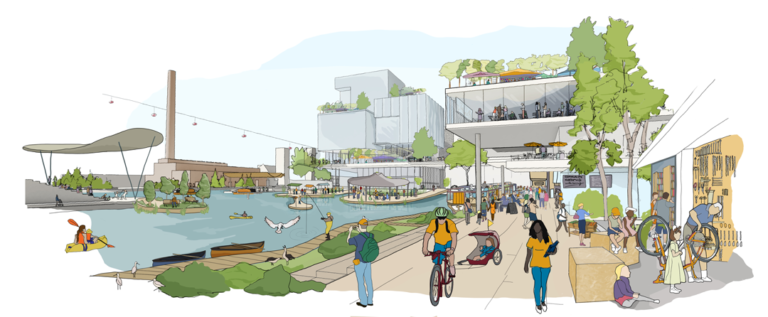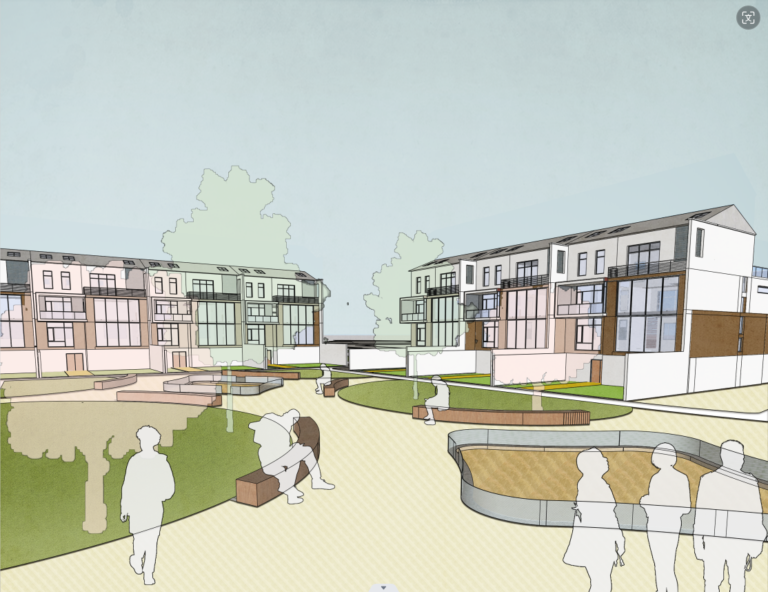How to create a co-living community?
The origin of co-living community
Around 2013, major cities around the world began another O2O revolution under the sharing economy: co-living community[1]. From London, New York and San Francisco in the West. Go to Beijing, Shanghai, Guangzhou, Tokyo, and Seoul in the east. In addition to the high cost of living, most of its residents are a large number of migrant workers, young entrepreneurs, and freelancers.
The concept of co-living community originated in Europe and emerged in Denmark in the 1970s. The modern concept of shared housing originated in the 1960s, when a group of Danish families believed that the housing and community system at that time could not meet the needs of caring for children. The first modern shared housing plan, Saettedammen, formed about fifty families in 1967 as a conceptual community. In addition, there has also been a co living model developed by assisting working mothers or single parents in sharing parenting work[2]. With the advent of advanced age society, co care has become a way of life.

Figure 1: Co-living community https://www.linkedin.com/pulse/why-were-building-coliving-community-ecosystem-christine-mcdannell/)
Co-living communities in UK
Marmalade Lane
Marmalade Lane is Cambridge’s first co-living community, which is a sustainable neighbourhood of 42 award-winning homes with extensive community facilities and a sociable shared garden and car-free lane[3].

Figure 2: Housings of Marmalade Lane https://ml.qwirx.com/#design
The community has a Lane – a child-friendly, car-free ‘street’ through the development; a shared space encouraging neighbourly interaction. Since moving in, the co-living community has added cable drum tables and chairs in the plaza area outside the common house and a cosy outdoor siting area.

Figure 3: The Lane https://ml.qwirx.com/#design
Marmalade Lane is a real community, a place to be friends with your neighbours. And as well as superb architect-designed modern homes, residents benefit from extensive shared facilities, a large shared garden and car-free lane and community life.
Bridport Cohousing
Bridport Cohousing is the largest, all affordable cohousing scheme in the UK and provides a mixed tenure intergenerational neighbourhood of eco homes (1 bed flats and 2,3,and 4 bed houses) for 53 households[4].
The focus has been to get quality housing built for local people who struggle to find affordable homes to rent and buy in this very desirable town. It use Sociocracy as its governance tool and work hard to create a cohesive neighbourhood. An intergenerational group of very diverse people, living in a very beautiful location, not far from the sea on the Jurassic Coast of England.

Figure 4: Aerial view of Bridport Cohousing https://diggersanddreamers.org.uk/community/bridport-cohousing
Reflection on co-living community in my design
Through studying the concept and cases of co-living community , I have realized that the use of public spaces is extremely important for communities. This represents the vitality of a community and also the vitality of urban space. A community designed with new elements can bring people spiritual pleasure and improve their happiness index in life.So I introduced this concept into my design. From the master plan, it can be seen that I have enclosed several semi-detached houses in a circle, forming a neighborhood central square for residents to engage in public activities.

Figure 5: Master plan of my design (by Yuzhi Yao)

Figure 6: Aerial view of the co-living community (by Yuzhi Yao)
On the neighborhood central square, there are some clustered green spaces, surrounding with some recreational seats. It also includes a sandy playground and entertainment facilities, where children can play. At the same time, the enclosed recreational seats can provide parents with the possibility of taking good care of their children.

Figure 7: Neighborhood center of the co-living community (by Yuzhi Yao)
References
[1] Chatterton, P. (2013) ‘Towards an Agenda for Post-carbon Cities: Lessons from Lilac, the UK’s First Ecological, Affordable Cohousing Community’, International journal of urban and regional research, 37(5), pp. 1654–1674.
[2] Kingfisher, C. (2021) Collaborative Happiness: Building the Good Life in Urban Cohousing Communities. 1st edition. Vol. 8. New York, NY: Berghahn Books.
[3] Dias De Carvalho, R. (2015). COURTYARD HOUSING AS A SUBTROPICAL URBAN DESIGN MODEL Exegesis (Written component). [online] Available at: https://core.ac.uk/download/pdf/33504337.pdf.
[4] Anon, (n.d.). Bridport Cohousing – Diggers and Dreamers. [online] Available at: https://diggersanddreamers.org.uk/community/bridport-cohousing [Accessed 10 May 2024].










Thank you very much for sharing, this is a very useful blog. As you said, we are going through a housing revolution. At a time when prices are soaring and social competition is under great pressure, how to improve people’s streets, communities and living environments through design is worthy of our consideration.
I also checked relevant information. Solmatch, Spain’s first renewable energy sharing community, was launched in June 2020. This community created by Spanish energy giant Repsol is committed to providing customers with 100% clean electricity through solar energy, thereby providing more practical experience in distributed energy generation in Spain. It is understood that solar panels are installed on the roofs of the buildings in the Solmatch community, and residents in the entire community can realize “photovoltaic sharing”. The monthly electricity bills of the buildings in the community are nearly half cheaper than when powered by the grid. Of course, this is just one aspect of a shared community; it also involves architecture, urban planning, financing, legality, taxation, and more. These will make huge improvements to our daily lives and the natural environment.
Secondly, your design is also very creative and perfectly reflects your concept of sharing community, which is worth learning from.
Reference:
Lorente y Fernández, D., Sakamoto, T., Devesa, R. & Bugés, M. (2023) Cohousing in Barcelona : architecture from / for the community. Printed..
Fromm, D. (1991) Collaborative communities : cohousing, central living, and other new forms of housing with shared facilities. New York: Van Nostrand Reinhold.
The blog introduces co living and its expansion around Europe and United Kingdom and other part of the world as well. the examples used are good and helps in understanding about co-housing, but it would have enhanced it more if the author would have added some detailed about what are the benefit of co-housing is and how it is affecting the growth of community.
As we talk about conventional lifestyle cohousing uses minimal resources, most of them are specifically aligned with environmental objectives among them are automobile clubs, food production, bicycle storage, renewable energy production, carbon reduction plans and biodiversity as well.
Co-housing promotes community cohesion and decreases social isolation. It promotes community living and helps in organising communal activities like planting trees, maintaining hedgerows, celebrating events and festivals together etc.
The blog should have highlighted about the health benefits of living in co-housing, which promotes share transportation or public transportation for movement which keeps environment healthy and the health of the people living. One of the major benefits of having co housing is that residents living in co-housing do not really have to stay in hospitals, they can live in their own houses and get the treatment which reduces the stress over health sector workers. Though it is fantastic to know that the blog provides a summary of the author’s co-housing endeavour for this semester. And showing your own reflection on your own design is great to known, which will help others as well.
This paper provides a comprehensive and insightful exploration into the creation of co-living communities, tracing their origins and analyzing successful examples. The historical context, starting with the Danish Saettedammen project of the 1960s, is particularly enlightening, showcasing the evolution of shared housing to address modern urban challenges. The detailed case studies of Marmalade Lane in Cambridge and Bridport Cohousing in Dorset offer practical examples of how co-living can foster community interaction, sustainability, and affordability. Marmalade Lane’s child-friendly, car-free environment and Bridport’s focus on affordable, eco-friendly housing demonstrate the tangible benefits of thoughtful co-living design. The reflection on how these principles have influenced your own design work is compelling. Your design emphasizes the importance of public spaces, with a well-conceived neighborhood central square and clustered green areas that encourage social interaction and community cohesion. The inclusion of recreational facilities further enhances the living experience, making it suitable for families. This paper not only highlights the social and economic advantages of co-living communities but also provides a clear blueprint for integrating these concepts into new developments. It is an excellent resource for anyone interested in innovative housing solutions that promote community and sustainability.
Conclusion: Co-living communities, when designed with a focus on sustainability, affordability, and social interaction, can significantly enhance urban living by creating supportive, vibrant, and inclusive neighborhoods.